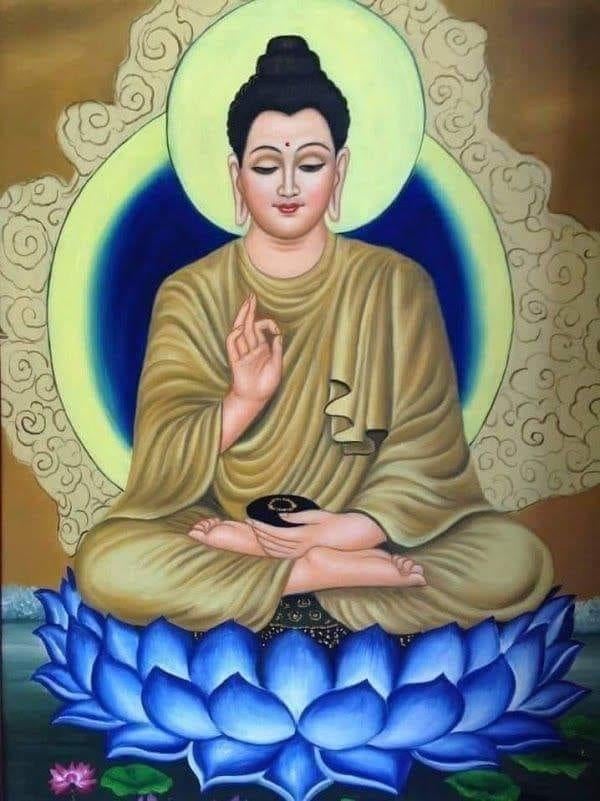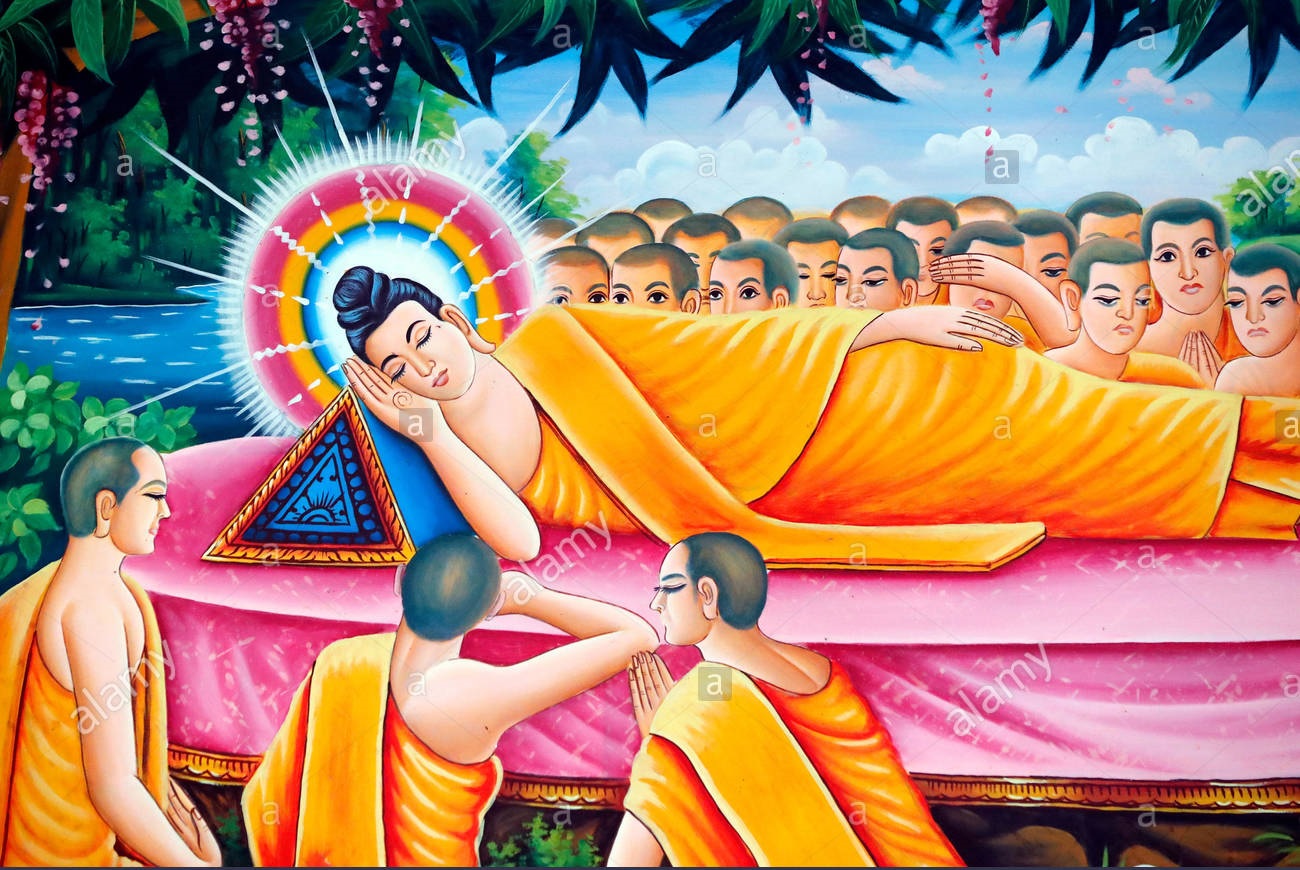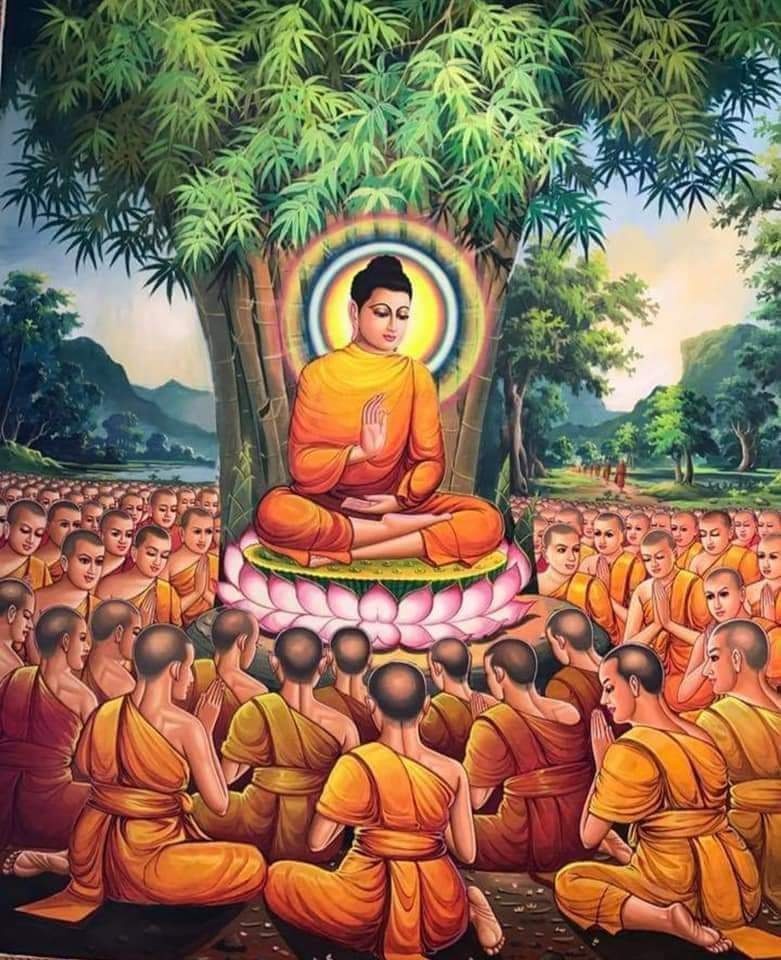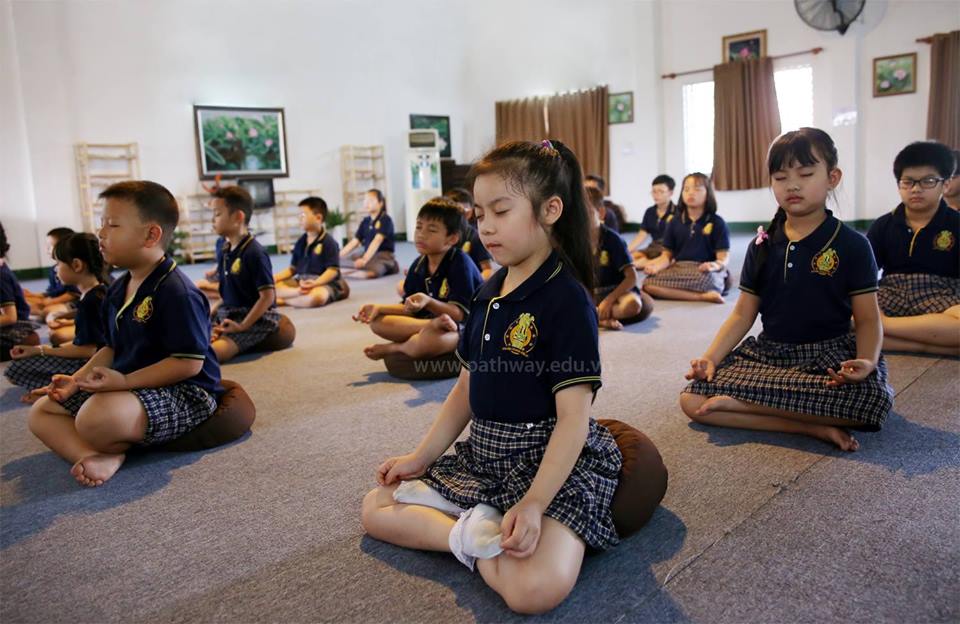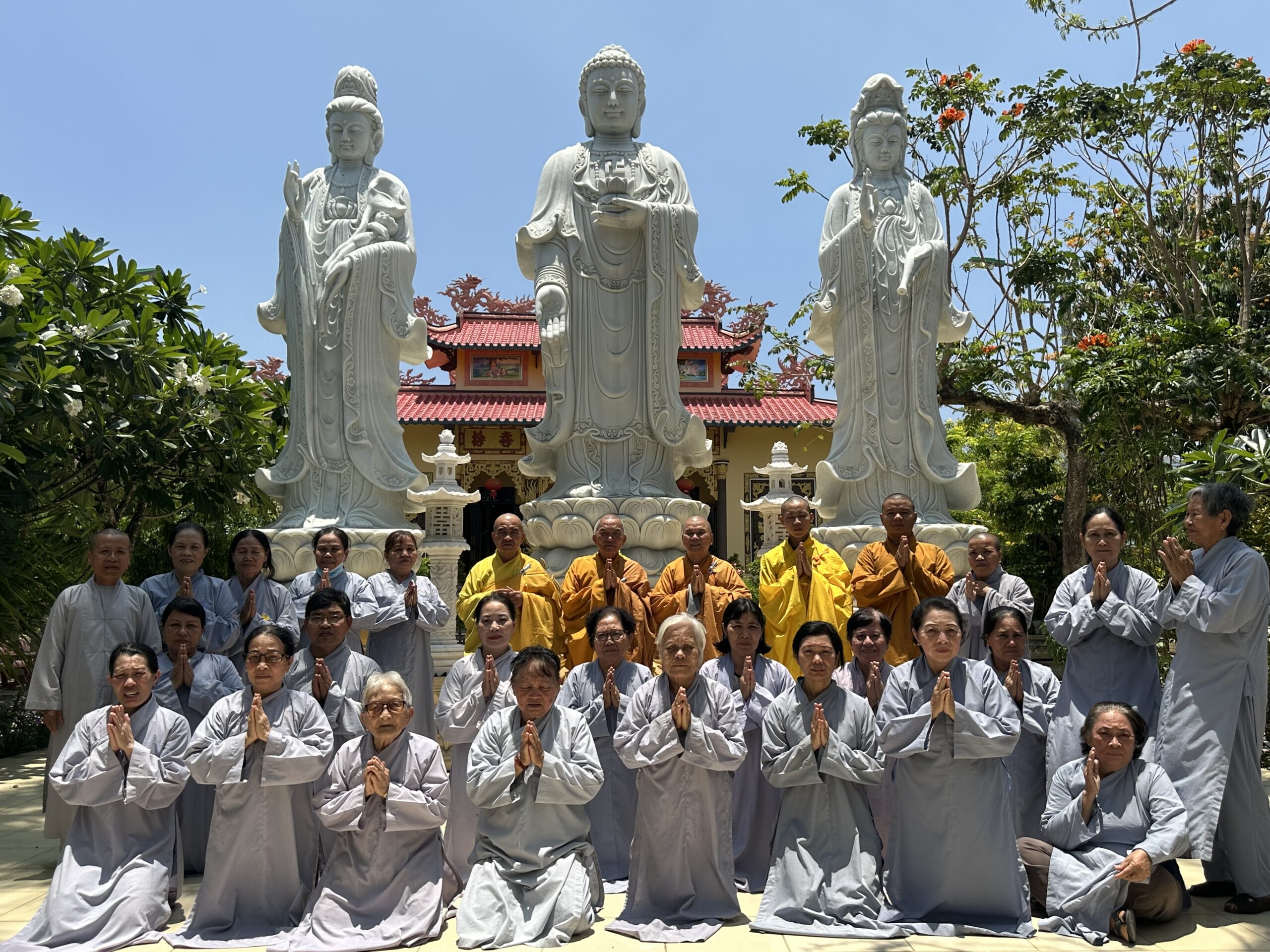I. Contemplation On Loving-Kindness (Metta)
May I be well and happy.
May I be free from enmity, disease, and grief.
May I take care of myself happily.
May all beings in front be well and happy.
May they be free from enmity, disease, and grief.
May they take care of themselves happily.
May all beings in the right direction be well and happy.
May they be free from enmity, disease, and grief.
May they take care of themselves happily.
May all beings behind be well and happy.
May they be free from enmity, disease, and grief.
May they take care of themselves happily.
May all beings in the left direction be well and happy.
May they be free from enmity, disease, and grief.
May they take care of themselves happily.
May all beings above be well and happy.
May they be free from enmity, disease, and grief.
May they take care of themselves happily.
May all beings below be well and happy.
May they be free from enmity, disease, and grief.
May they take care of themselves happily.
May all beings in the surrounding be well and happy.
May they be free from enmity, disease, and grief.
May they take care of themselves happily.
May all beings who are dear to me be well and happy.
May they be free from enmity, disease, and grief.
May they take care of themselves happily.
May all beings who are friendly to me be well and happy.
May they be free from enmity, disease, and grief.
May they take care of themselves happily.
May all beings who are unfriendly to me be well and happy.
May they be free from enmity, disease, and grief.
May they take care of themselves happily.
May all beings be well and happy.
May they be free from enmity, disease, and grief.
May they take care of themselves happily.
II. Contemplation On The Impurities of The Body
The methodical practice of the Thirty-two Parts of the Body Meditation can help one penetrate and understand the true nature of the body. It can help one to see impermanence and comprehend that the body is made of four primary elements:
- earth (solidity)
- air (motion)
- fire (temperature)
- water (liquidity)
Practicing the Thirty-two Parts of the Body Meditation, can help one build immense levels of concentration, increase the potential for self-healing, and allow one to experience the taste of deep freedom and peace.
Imagine yourself removing the items part by part and contemplate each part as loathesome and impermanent.
- Head hair (Kesa),
- Body hair (Loma),
- Nails (Nakkha),
- Teeth (Danta),
- Skin (Taco)
- Flesh (Masam),
- Sinews (Naharu),
- Bones (Atthi),
- Bone Marrow (Atthiminjam),
- Kidneys (Vakkam)
- Heart (Hadayam),
- Liver (Yakanam),
- Diaphragm (Kilomakam),
- Spleen (Pihakam),
- Lungs (Papphasam)
- Large Intestine (Antam),
- Small Intestine (Antagunam),
- Stomach (Udariam),
- Feces (Kerisam),
- Brain (Mattagunam)
- Bile (Pittam),
- Phlegm (Semhan),
- Pus (Pubbo),
- Blood (Lohitam),
- Sweat (Sedo),
- Fat (Medo)
- Tears (Assu),
- Grease (Vasa),
- Saliva (Kelo),
- Mucus (Singhanika),
- Oil of the Joints (Lasika),
- Urine (Muttam)
III. Development Of Concentration
Anapanasati : Mindfulness on breathing in and out
An untrained mind is used to create all kinds of habits. It jumps from one object to another to create thoughts. We have not allowed the consciousness to rest for a minute or a second. This causes restlessness to our mind. We can’t make out one single moment in between two thoughts.
We use the consciousness to operate the six sense bases and thereby create a thought in between. There may be a lapse in between these periods, but we do not allow the consciousness to rest.
Anapanasati develops the mind to a higher state and through developing concentration, we could control the thoughts as well and thus, allowing our consciousness to rest and attain to a state of calmness and peace.
The method is practised by fixing the mind at one point, not allowing the consciousness to behave in a way it used to be, jumping from one object to another. What we have to do is to be mindful of the object at one point – watching the in-breathing and out-breathing from that point.
From there, we will develop the Absorption (Jhana) MN 19 from the first to the fourth. Absorption is deep concentration by fixing the mind on one object exclusively.
| Jhana | Jhana Factors | |||||
| 1st | 1st | Vittaka (Initial Application) |
Vicara (Sustained Appplication) |
Piti (Joy) |
Sukkha (Happiness) |
Ekaggata (One -Pointedness) |
| 1st | Vicara (Sustained Appplication) |
Piti (Joy) |
Sukkha (Happiness) |
Ekaggata (One -Pointedness) |
||
| 2nd SN 21.1 |
2nd SN 21.1 |
Piti (Joy) |
Sukkha (Happiness) |
Ekaggata (One -Pointedness) |
||
| 3rd | 3rd | Sukkha (Happiness) |
Ekaggata (One -Pointedness) |
|||
| 4th | 4th | Ekaggata (One -Pointedness) |
||||
IV. Insight Meditation (Vipassana)
After one has full control of the absorption, the teacher will guide them to Insight Meditation. Insight Meditation is to develop wisdom, to see, understand and realise the true nature of life i.e. that every phenomena rise and fall – it is
ANICCA (impermanent),
DUKKHA (unsatisfactory) and
ANATTA (non-self).
There are four stages to attain:-
(1) First stage of development
To realise:
- that we are nothing but MIND and BODY (Form) i.e. Nama-Rupa;
- cause and effect; and
- rising and falling of all phenomena.
Upon realising these, one will eradicate three fetters, i.e.
- Self delusion
- Sceptical doubt
- Clinging to rites and rituals
(2) Second Stage – Silencing
The next stage of development is the Second stage.
The two defilements one has to deal with are attachment to sensual objects (Kamaraga) and hatred (Patigha). These two defilements one finally get rid of at the Third stage. In the attainment of the Second stage, half of the effects of these two defilements is got rid of.
The spontaneous activity of the mind in producing a thought to experience a sense-object does not create desire. It is the subsequent creation of thoughts to pursue the pleasant that create attachment. Pursuit of what is unpleasant is aversion. The state of mind in attachment and aversion are the two defilements that promote and maintain desire. The yogi can live in the awareness of the mind.
In Mindfulness he can suppress the subsequent thoughts by practicing impermanence. When thoughts producing desire are reduced, the yogi will experience an upward surge of the mind leading to fruition of the Second stage.
* In the 4 foundations of Mindfulness, the 2nd and 3rd foundations deal with feeling and the creation of thoughts. These 2 things are performed by the mind. Buddha directly indicate that feeling and creation of thoughts can be suppressed by practicing impermanence.
As indicated in the path, Silencing of the Mind does the same performance as indicated by Buddha in the 2nd and 3rd Foundations.
(3) Third Stage – Silencing
Continued efforts at further silencing of the mind may lead to the achievement of the Third stage of development. Here, the spontaneous activities of the mind in the creation of a thought to perform the activity of sense base cannot be stopped but the random thought can be completely got rid of to make the mind silent. The mindfulness will become more active after the Second stage of development ultimately leading to making the mind silent.
Silencing the mind indicates that the defilement of attachment and aversion the yogi has got rid of and the yogi only experience an object that attract the sense base. The habit of the mind promoting thoughts in pursuit of a sense object has since been overcome and the quality of mindfulness will very effectively keep the yogi on the alert. The activities of the mind has ceased to promote random thoughts of pursuing attachment or aversion.
At this stage, the mind reaches a fruition of the Third stage of development. There is no desire in the yogi now. Mindfulness is very sharp and deep silence prevail in his mind. The yogi is always developing an objectless Samadhi which is very peaceful and pleasant.
(4) The Fourth Stage
* In the 4 foundations of Mindfulness, the 4th foundation deal with the Mindfulness of Mind-objects (Dhammanupassana)
- The Five Hindrances (Nivarana)
- The Five Aggregates (Khandha)
- The Sense Bases (Ayatana)
- The 7-Factors of Enlightenment (Bojjhanga)
- The Four Noble Truths (Ariya-sacca)
The Fourth stage of development is to clear the mind of “I” and “Mine” belief and developing the mind to a stage to create a cessation of consciousness (Vinnana).
Buddha has encouraged the practice of reality of life in each of the 5 grasping groups. This helps one to reduce the sense of Self.
After this practice, the yogi should be made to analyse the creation of a thought in regard to each of the sense bases as cause and effect. This will help to reduce the ego of “I” and “Mine”. “I” and “Mine” are created by bundles of thoughts more in recollection of past incidents, creating “I” as the author of such incidents.
To get rid of this habit of the mind, the yogi should be made to live in the present moment. The yogi could feel as if the consciousness is in front of him in contact with the present moment which in reality is impermanence. This exercise will enable the yogi to get rid of the ego. At this stage the mind of the yogi is in vipassana samadhi, always conscious of impermanence.
Next stage is to get rid of consciousness. For this purpose the mind must be brought to a stage of equanimity. The 7 factors of Enlightenment will help one to attain that equanimity. The mind will be very peaceful and calm existing in the present moment.
Impermanence is a quick change in movement and once the yogi apply impermanence to the tranquil mind the consciousness which is a created force to maintain one’s physical existence in the worldly behaviour.
Living fully in impermanence ultimately lead the consciousness to a Void. The yogi realises impermanence as nothing but Void.
In this attainment the yogi loses the perception of the body by the mind and the surroundings and will realise nothing but Emptiness, where there is no sense of mind and the body. The creation carried out by the mind has come to an end and if one lives in that developed state of mind, and only realises Void which means there is no mind and body. Being a worldling, the yogi can comeback to the world but the yogi lives in impermanence.
Buddha refer to 2 stages of Nirodha.
- Complete to get rid of all sense base activities which occur at death.
- The yogi has realised nibbana but live in the world using the six sense bases – always conscious of Impermanence.
These Meditation Instructions were given by late Ven Amatha Gavesi of Sri Lanka,as understood by the compiler Mr Vajiro (Richard) Chia. These instructions and notes were specially prepared for those who attended the Meditation Classes conducted by Mr Vajiro Chia.
Amatha Gavesi – Meditation Instructions (mysticlotus.org)


